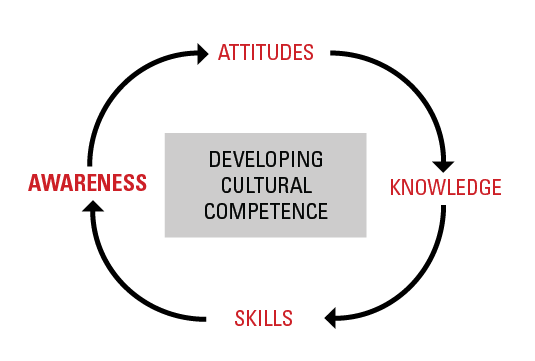
The concept of cultural humility was developed by Melanie Tervalon and Jann Murray-Garcia in 1998 to address inequities in the healthcare field. It is now used in many fields, including education, public health, social work, and library science, to increase the quality of interactions between workers and their diverse community members. Cultural humility goes beyond the concept of cultural competence to include:
To date, there is no one definition of cultural competence as definitions have evolved from diverse perspectives, interests and needs. One definition is known as the Cross Framework, which defines cultural competence as a set of congruent behaviors, attitudes, and policies that come together in a system, agency, or among professionals that enables effective work in cross-cultural situations (Cross et al., 1989).
Being culturally competent is a continual process that involves an ongoing critical examination of one’s attitudes, awareness, knowledge and skills in order to negotiate cross-cultural differences to complete tasks and/or create positive living, learning and working environments (NC State University Office for Institutional Equity and Diversity).
Cultural competence encompasses:

Source: NC State, Office for Institutional Equity and Diversity
These podcasts seek to break cultural barriers and invite listeners to hear real human stories. These podcasts fight against the dehumanization of people from other backgrounds and cultures, and they do it through storytelling.




The Haudenosaunee Confederacy (a.k.a. Iroquois or Five Nations Confederacy) encompasses the sovereign Mohawk, Oneida, Onondaga, Cayuga, Seneca, and later the Tuscarora nations. Haudenosaunee means "people who build" or "people of the longhouse." The Mohawk are the Keepers of the Eastern Door, the Onondaga are the Keepers of the Central Fire, and the Seneca are the Keepers of the Western Door.